
Having trouble viewing this video? Please visit our Video FAQ page In this video, Cody first demonstrates how to paint the fine details he’ll apply to our HO scale Winston-Salem diesel locomotive. He then shares techniques for masking and painting (using an airbrush) the larger locomotive components in the desired base coat colors. […]
Read More…
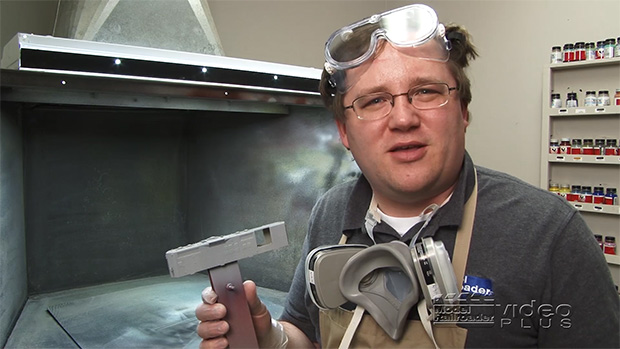
Having trouble viewing this video? Please visit our Video FAQ page Our Winston-Salem Southbound locomotive painting project continues. This time, Cody shows how to complete the final detail work before cleaning the assembly, and then heading to the paint booth to apply a primer coat. […]
Read More…
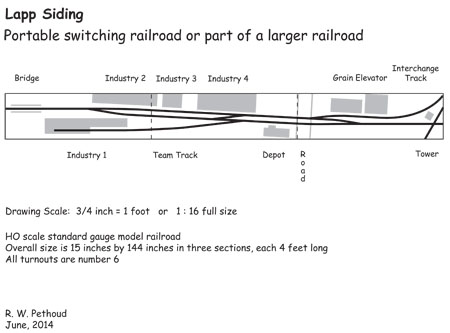
Model railroad author Robert Pethoud wrote “How to operate a small switching layout” in the March 2016 issue of Model Railroader magazine. In that article Robert shows how to use three 15″ x 48″ modules to create an operationally interesting shelf layout. The story features an HO scale track plan, the Fall Creek Branch. As […]
Read More…

Name: Fall Creek Branch Layout owner: Robert Pethoud Scale: HO (1:87.1) Size: 15″ x 144″ Prototype: freelanced Locale: Oregon Era: 1950s Style: sectional Mainline run: 12 feet Minimum radius: 26″ Minimum turnout: no. 5 Maximum grade: none Benchwork: open frame Height: varies Roadbed: N scale cork on 1⁄4″ thick basswood Track: code 83 flextrack Scenery: […]
Read More…
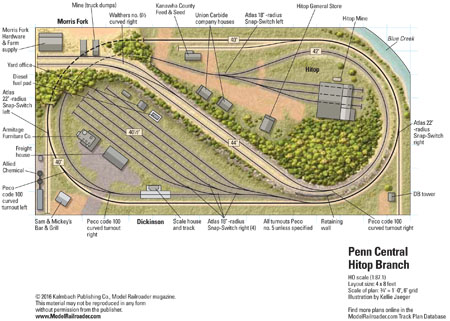
Name: Penn Central Hitop Branch Layout owner: Steve Campbell Scale: HO (1:87.1) Size: 4 x 8 feet Prototype: Penn Central (New York Central) Locale: West Virginia Era: 1968 to 1975 Style: island Mainline run: 18 feet Minimum radius: 22″ (main), 18″ (branch) Minimum turnout: Atlas Snap-Switch Maximum grade: 3.4 percent Benchwork: cookie-cutter Height: 40″ to […]
Read More…
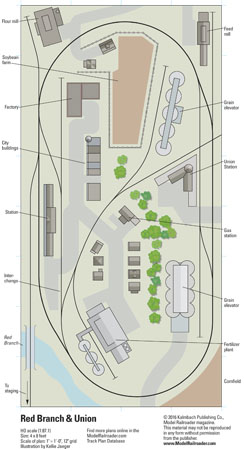
Name: Red Branch & Union RR Scale: HO (1:87.1) Size: 4 x 8 feet Theme: Midwestern granger road Locale: Illinois Era: 1975 Style: island Mainline run: 20 feet Minimum radius: 18″ Minimum turnout: Atlas 18″ radius Snap-Switch Maximum grade: none (flat) This track plan was originally published in the March 2016 Model Railroader. Click on the link […]
Read More…
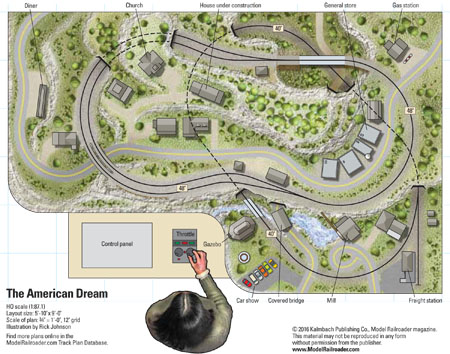
Name: Sherman Hills Layout owner: Judy Milford Scale: HO (1:87.1) Size: 5′-10″ x 9′-0″ Theme: small-town America Locale: generic northeastern U.S. Era: 1960s Style: island Mainline run: 32 feet in two separate loops Minimum radius: 18″ Minimum turnout: no. 6 Maximum grade: flat Benchwork: L-girder Height: 40″ (lower loop), 48″ (upper) Roadbed: cork Track: Atlas […]
Read More…
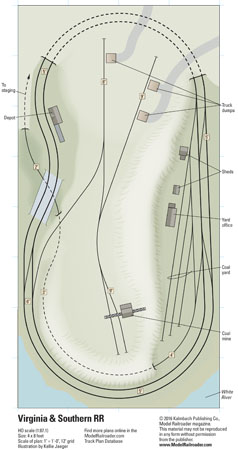
Name: Virginia & Southern RR Scale: HO (1:87.1) Size: 4 x 8 feet Theme: Main line coal hauling Locale: Appalachian mountains Era: 1950s Style: island Mainline run: 19 feet (double-tracked) Minimum radius: 18″ Minimum turnout: no. 4 Maximum grade: 3 percent This track plan was originally published in the March 2016 Model Railroader. Click on the link […]
Read More…
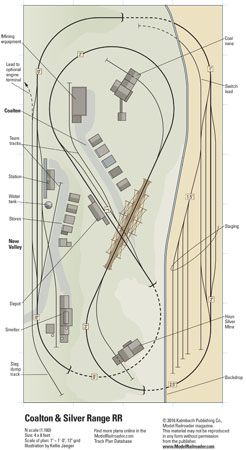
Name: Coalton & Silver Range RR Scale: N (1:160) Size: 4 x 8 feet Theme: Rocky Mountain mining Locale: Colorado Era: 1920s Style: island Mainline run: 37 feet Minimum radius: 15″ Minimum turnout: no. 4 Maximum grade: 3 percent This track plan was originally published in the March 2016 Model Railroader. Click on the link to download […]
Read More…
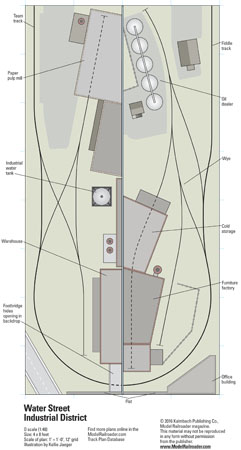
Name: Water Street Industrial District Scale: O (1:48) Size: 4 x 8 feet Theme: Urban switching Locale: Generic city Era: 1940s-1950s Style: modular Mainline run: none Minimum radius: 22″ Minimum turnout: Atlas 20th Century Rail two-rail wye Maximum grade: none (flat) This track plan was originally published in the March 2016 Model Railroader. Click on the link […]
Read More…
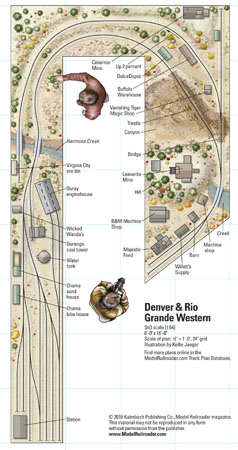
Name: Denver & Rio Grande Western Layout owner: Pat Gerstle Scale: Sn3 (1:64 proportion, 3-foot gauge) Size: 8 x 16 feet Prototype: Denver & Rio Grande Western Era: 1940s Style: walk-in Mainline run: 24 feet Minimum radius: 30″ Minimum turnout: no. 6 Maximum grade: 2 percent Benchwork: L-girder Height: 50″ Roadbed: Homasote Track: about 80 […]
Read More…
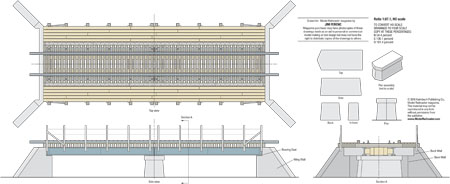
Download plans for a railroad beam bridge. Learn how modeler Jim Ferenc scratchbuilt this common railroad bridge for his HO scale Colorado & Southern Northern Division model train layout in the March 2016 Model Railroader. Jim used wooden ties and plastic girders on his bridge. […]
Read More…












